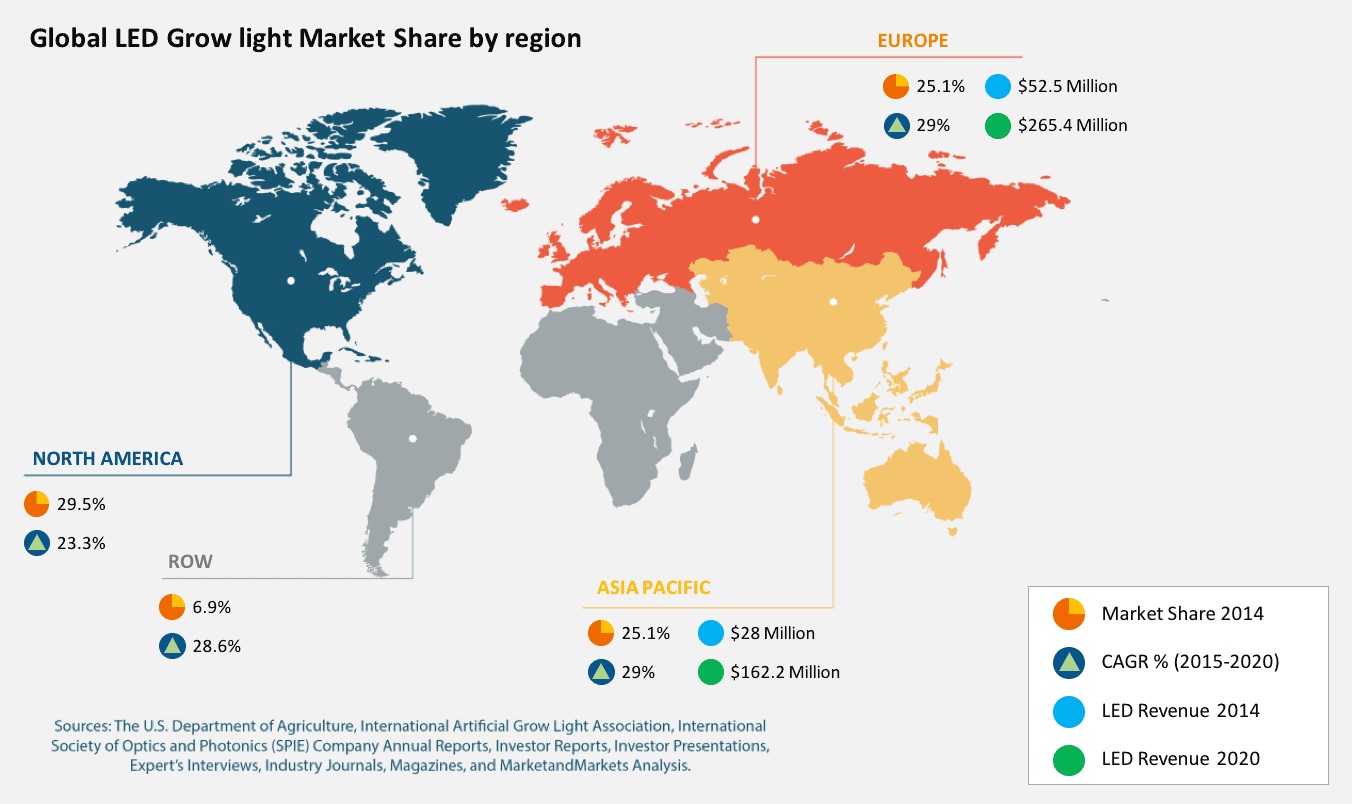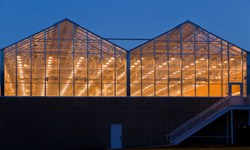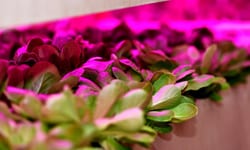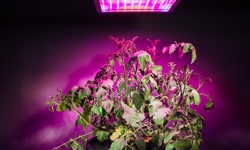Whether in indoor agricultural facilities or commercial greenhouse settings, the short-term and long-term potential of LEDs in the cultivation of herbs, vegetables, fruit, flowers and other plants is nothing short of remarkable. As the global population expands and available farmland shrinks, the environmentally friendly practice of using LEDs to grow plants is establishing itself as a “greener” alternative to traditional farming methods.
LED horticultural luminaires are forecast to experience astronomical growth over the next 5 years as both the total amount of horticultural space and the adoption rate of LEDs increase rapidly.
Unit sales are forecast to grow between 2015 and 2020 at an 83.3% compound annual growth rate (CAGR).
—Navigant Research 2015
LEDs for Horticulture are the Smart Choice
Example of the benefits of LEDs for tomatoes
In the early 1980’s, greenhouse tomatoes in the United States represented 1% of the retail market. Today they represent 80%, and it was the quality and taste of the tomato that drove this growth. With LEDs, producing a tomato requires only 20% of the amount of water needed to grow them in a field.
Horticulture Applications with LEDs
The Growing Horticulture Market
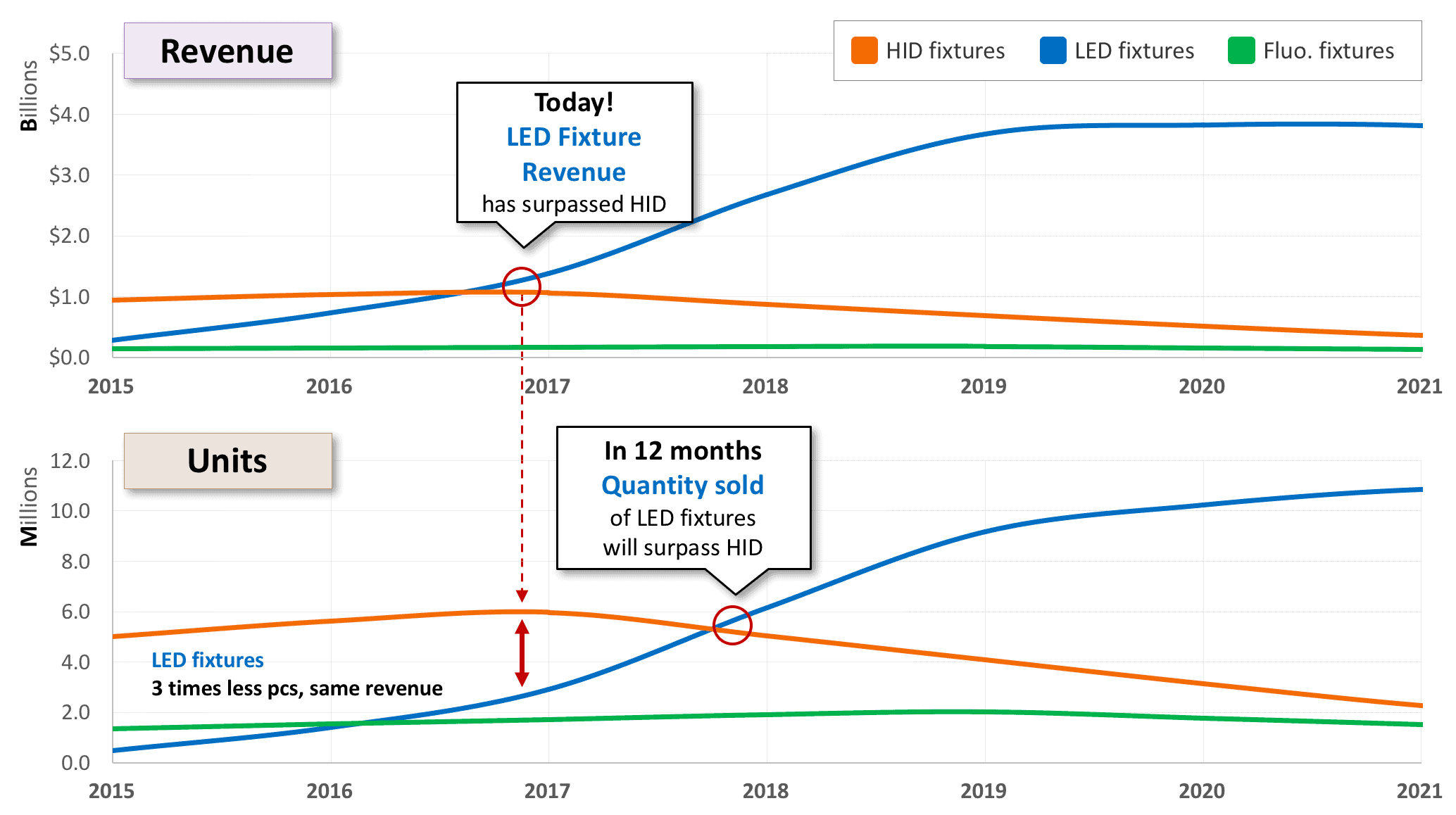
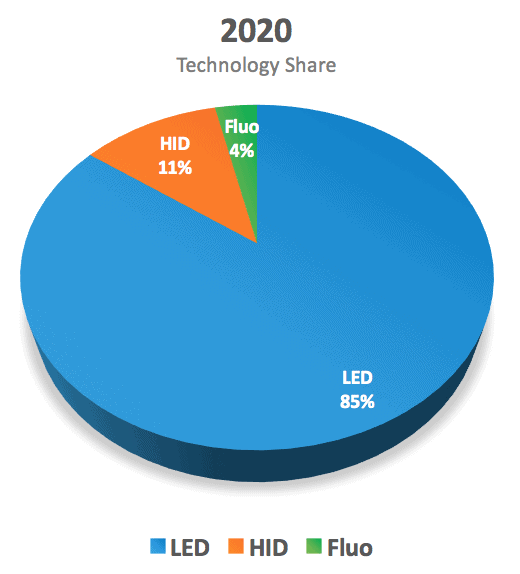
Europe is and will be the biggest market followed by North America and Asia Pacific
